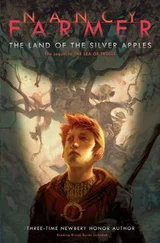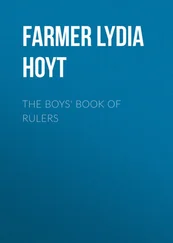Lydia Farmer - The Girls' Book of Famous Queens
Здесь есть возможность читать онлайн «Lydia Farmer - The Girls' Book of Famous Queens» — ознакомительный отрывок электронной книги совершенно бесплатно, а после прочтения отрывка купить полную версию. В некоторых случаях можно слушать аудио, скачать через торрент в формате fb2 и присутствует краткое содержание. Издательство: Иностранный паблик, Жанр: foreign_antique, foreign_prose, на английском языке. Описание произведения, (предисловие) а так же отзывы посетителей доступны на портале библиотеки ЛибКат.
- Название:The Girls' Book of Famous Queens
- Автор:
- Издательство:Иностранный паблик
- Жанр:
- Год:неизвестен
- ISBN:нет данных
- Рейтинг книги:5 / 5. Голосов: 1
-
Избранное:Добавить в избранное
- Отзывы:
-
Ваша оценка:
- 100
- 1
- 2
- 3
- 4
- 5
The Girls' Book of Famous Queens: краткое содержание, описание и аннотация
Предлагаем к чтению аннотацию, описание, краткое содержание или предисловие (зависит от того, что написал сам автор книги «The Girls' Book of Famous Queens»). Если вы не нашли необходимую информацию о книге — напишите в комментариях, мы постараемся отыскать её.
The Girls' Book of Famous Queens — читать онлайн ознакомительный отрывок
Ниже представлен текст книги, разбитый по страницам. Система сохранения места последней прочитанной страницы, позволяет с удобством читать онлайн бесплатно книгу «The Girls' Book of Famous Queens», без необходимости каждый раз заново искать на чём Вы остановились. Поставьте закладку, и сможете в любой момент перейти на страницу, на которой закончили чтение.
Интервал:
Закладка:
The robes of a sovereign varied according to his present occupation. As all the kings were also priests, when they were engaged in the office of high-priest their garments resembled those worn by the sacerdotal order, with the exception of the apron and head-dress, which were of peculiar form, and belonged exclusively to the rank of king. This apron was richly ornamented in front with lions’ heads and other devices, and bordered with rows of asps, which were the emblems of royalty. After the union of Lower and Upper Egypt the sovereign wore a double crown. Egyptian men always shaved the entire head, and wore wigs, both within the house and out of doors. The women, however, wore their own hair, and were not shaved even in times of mourning or after death. Ladies wore their hair long and plaited in a great number of braids. The hair was plaited in the triple plait, the ends being left loose. Around the head was bound an ornamental fillet, with a lotus-bud falling over the forehead. The ear-rings worn by Egyptian ladies were large, round, single hoops of gold, sometimes over two inches in diameter, or made of six rings soldered together. Often an asp, whose body was of gold set with precious stones, was worn by persons of rank. Some few were of silver. Women wore many rings, sometimes three and four upon the same finger, and even the thumb was decorated with a single ring. Rings were ornamented with the scarabæus, or sacred beetle, or an engraved stone. They were occasionally in the form of a knot, or snail, or snake. Two cats, with an emblem of the goddess Athor between them, seems to have been a favorite device for rings. Egyptians also wore large gold anklets, or bangles, armlets, and bracelets, frequently inlaid with precious stones. Richly ornamented necklaces were a principal part of the dress of both men and women.
Great attention was paid by ladies and men of rank to the beauty of their sandals, which were sometimes richly ornamented. Shoes were also common in Egypt, many of them having been found at Thebes. But they are supposed to have been of late date, and belonged to the Greeks. The dresses of the women consisted of a loose robe or shirt, reaching to the ankles, fastened round the neck with a string, over which they wore a petticoat, secured at the waist by a girdle. This petticoat or gown, among ladies of rank, was made of richly colored stuff in a great variety of patterns. The most elegant of these figured materials were reserved for the robes of the deities and queens. Slaves and servants were not allowed to wear the same costumes as ladies, and their mode of dressing the hair was also different.
Egyptian ladies seem to have been given to the little tricks and arts of the toilet as well as more modern beauties. Of the various articles of the toilet found among the ancient remains, the principal are bottles, or vases, for holding ointment, and the kohl , or paint for the eyes; also mirrors, combs, and small boxes, spoons, and saucers. The custom of anointing the body is usual in hot climates, and contributes greatly to comfort. Their chief care was bestowed upon the anointing of the hair. The Egyptian combs were usually of wood, and double, and frequently carved and ornamented. The custom of staining the eyelids and brows with a moistened powder of a black color was of the most ancient date. It was thought to increase the beauty of the appearance of the eye, by making it seem larger by this external black ring around it. Many of these kohl -bottles have been found in the tombs, together with the bodkin employed in applying the black cosmetic.
Some of these bottles are ornamented with the figure of an ape, or monster, supposed to assist in holding the bottle between his arms while the fair beauty dipped her dainty bodkin into the much-prized beautifier. Pins and needles have also been found among the articles of the toilet. Some of these pins are of gold, and similar in size to those now employed by ladies as hat-pins and fancy hair-pins. Metal mirrors are also found richly ornamented and highly polished. It will be remembered that the brazen laver made by Moses for the tabernacle was formed of the “looking-glasses of the women,” who doubtless brought them from Egypt at the time of the exodus of the Israelites. The Egyptian dandies were also not without the highly prized canes. Many of these have been found at Thebes; some having a carved lotus-blossom for the head. It was customary, on entering a house, to leave their canes or sticks in the hall or at the door; and poor men were often employed to hold the canes of guests during a party, by the master of the house, who rewarded them with money or food. We have little knowledge of the nature of their baths; but as they were forbidden in deep mourning to indulge in them, they were probably considered a luxury as well as a necessity. The priests were remarkable for their love of cleanliness, shaving the whole body every three days, and bathing twice every day and twice during the night. So great an abhorrence did an Egyptian feel for an unshaven person, that Herodotus says, “No Egyptian of either sex would on any account kiss the lips of a Greek, make use of his knife, his spit and cauldron, or taste the meat of an animal which had been slaughtered by his hand.”
This shaving of the head among the Egyptians is given as a reason by Herodotus for the remarkable hardness of the Egyptian sculls, as compared with those of other people. The most singular custom of the Egyptians was that of tying a false beard upon the chin, which was plaited and shaped according to the rank of the person. The beards on the figures of the gods were distinguished by the turning up of the ends. No man ventured to assume the beard of a deity. But after death, kings were accorded the honor of having their statues thus distinguished.
The art of painting common boards to imitate costly varieties, now so often employed, was practised by the ancient Egyptians. Boxes, chairs, tables, sofas, and other pieces of furniture were frequently made of ebony inlaid with ivory, and articles of sycamore and acacia were ornamented with rare woods.
The Egyptians displayed much taste in their gold, silver, porcelain, and glass vases. Glass was known from the earliest times, and glass-blowing was employed by them twenty-five hundred years ago. It is also stated that their dead were sometimes enclosed in glass coffins, or a crystal sarcophagus was made by covering the granite with a coating of vitrified matter, usually of a deep green color, which by its transparency allowed the hieroglyphics engraved upon the stone beneath to be plainly visible.
Emeralds, rubies, amethysts, and other expensive gems were most successfully imitated by the jewellers of Thebes. Pliny states that glass-cutting was known to the ancients, and that the diamond was employed for that purpose, as at present, even if they were ignorant of the art of cutting the diamond itself with its own dust. “Diamonds,” says Pliny, “are eagerly sought by lapidaries who set them in iron handles, for they have the power of penetrating anything, however hard it may be.”
The art of embroidery was commonly practised in Egypt, and gold and silver threads were used for this purpose. The loom was also employed by them, both in weaving linen, cotton, and wool, and also for the production of very rich stuffs, in which various colors were worked in innumerable patterns by the loom.
The Egyptians were also famed for their manufacture of paper, which was in the form of parchments made from the plant papyrus, which grew in the marshy regions of the Nile in great profusion. Leather was also prepared by them with great skill for various purposes, and the knife employed by them in the process, between three and four thousand years ago, is precisely similar to that used by modern curriers. Fullers, potters, carpenters, and cabinet-makers formed a large class of Egyptian workmen. The Egyptians were skilled in the working of metals; and gold, silver, brass, tin, iron, and lead were known in those days.
Читать дальшеИнтервал:
Закладка:
Похожие книги на «The Girls' Book of Famous Queens»
Представляем Вашему вниманию похожие книги на «The Girls' Book of Famous Queens» списком для выбора. Мы отобрали схожую по названию и смыслу литературу в надежде предоставить читателям больше вариантов отыскать новые, интересные, ещё непрочитанные произведения.
Обсуждение, отзывы о книге «The Girls' Book of Famous Queens» и просто собственные мнения читателей. Оставьте ваши комментарии, напишите, что Вы думаете о произведении, его смысле или главных героях. Укажите что конкретно понравилось, а что нет, и почему Вы так считаете.












